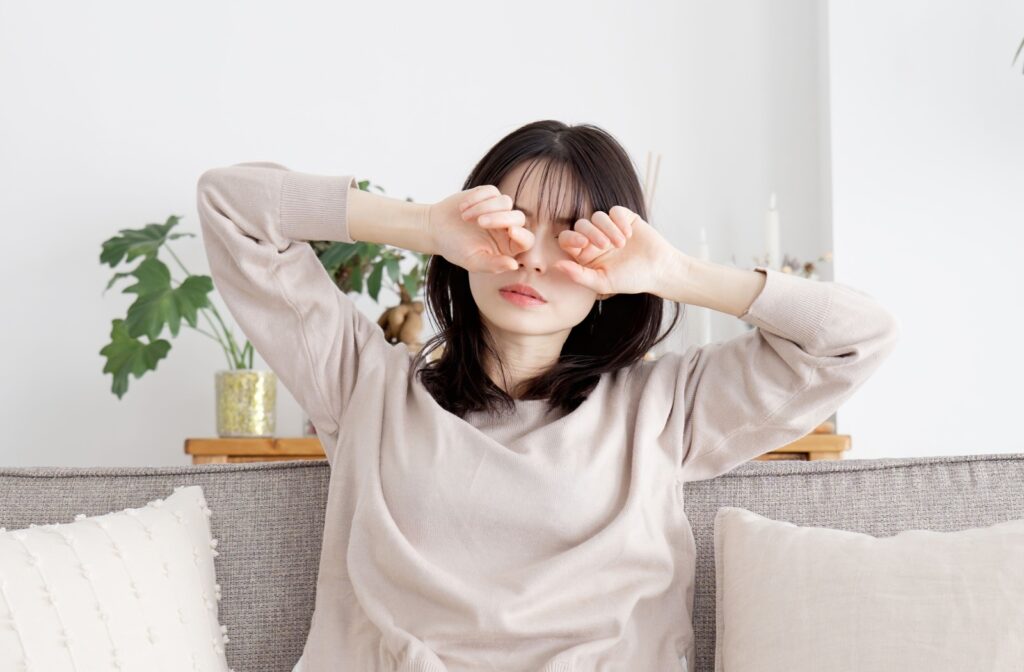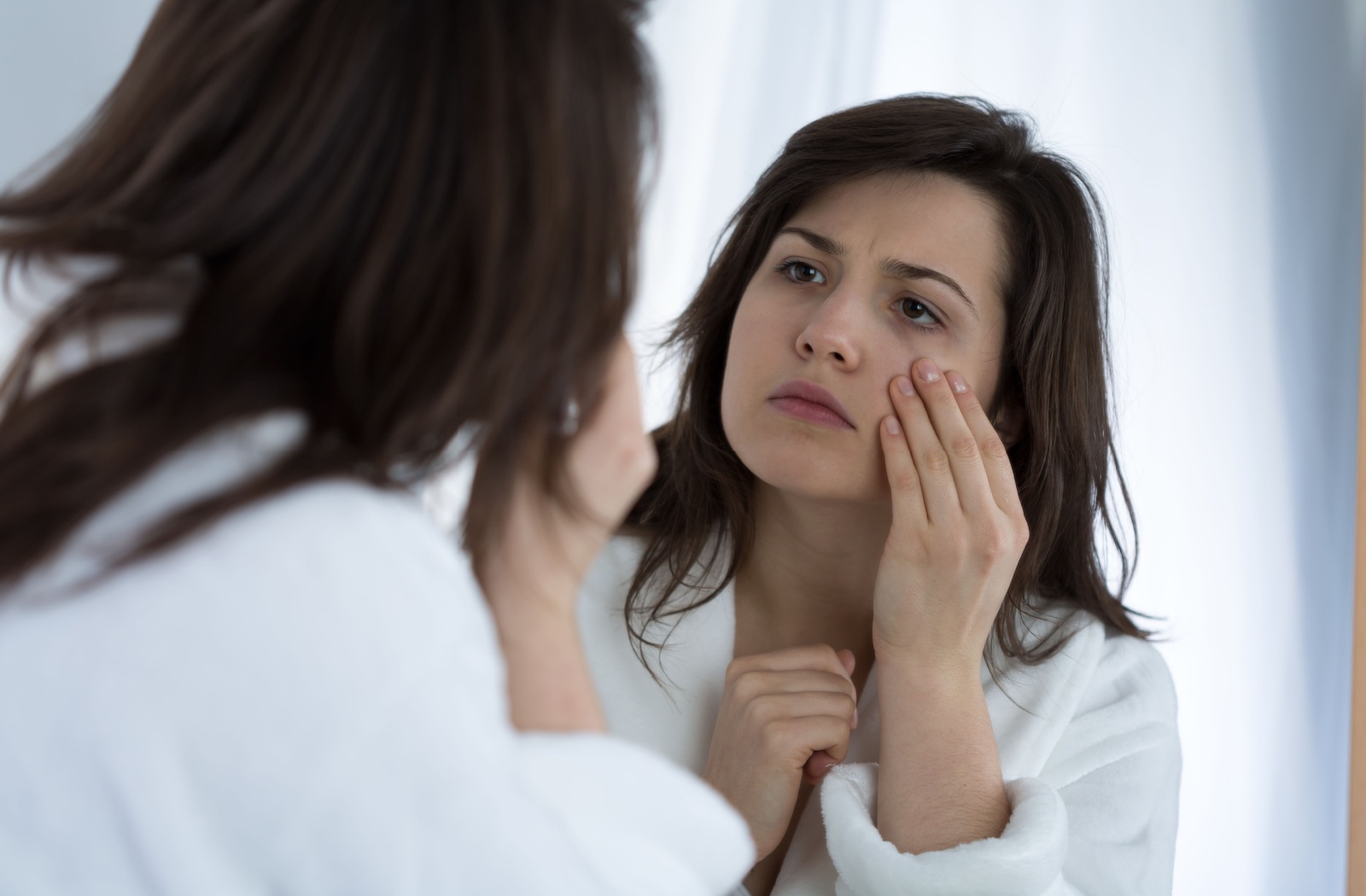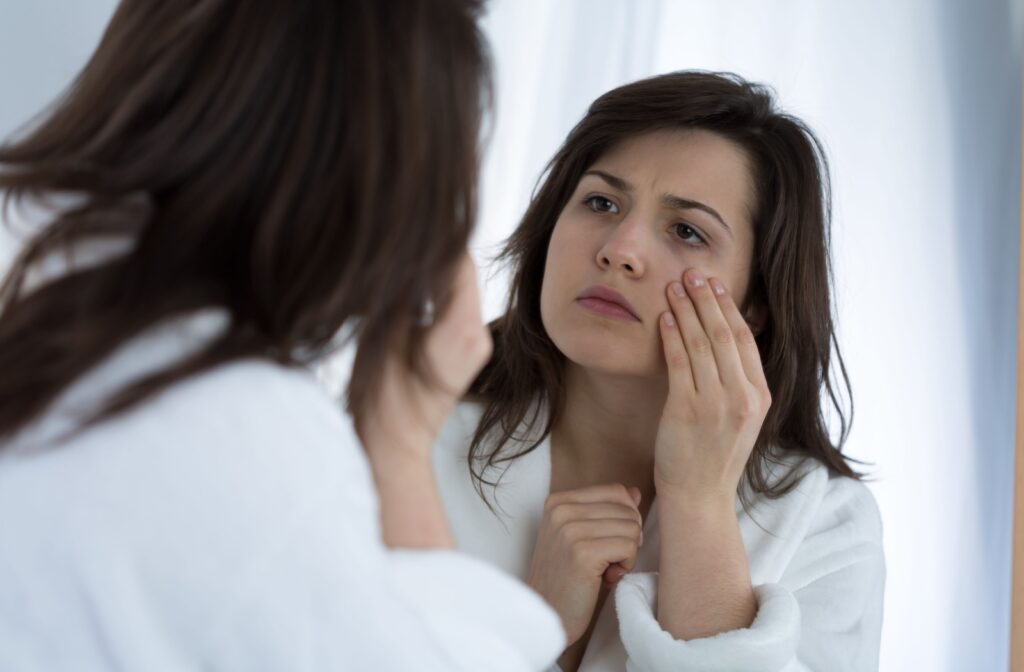Almost every contact lens wearer has felt that moment of panic: you rub your eye, then suddenly you’re not sure if your contact lens is still there. This common experience can leave you feeling worried, but a proper contact lens fitting can reduce the chances of a lens dislodging. The good news is that a contact lens can’t get lost behind your eye, though it can get stuck in an uncomfortable spot.
Understanding the signs of a displaced lens can help you handle the situation calmly and safely. You can often tell if a contact lens is still in your eye by the feeling that something is stuck in your eye, or by blurred vision, mild irritation, or redness. While dry eyes can also cause blurry vision, having just lost track of a lens is a good sign that your contact might just be stuck.
Signs of a Stuck or Lost Contact Lens
You might feel like something is in your eye, but you’re not quite sure what it is. This is the most direct sign that your contact lens has shifted. Here are the common symptoms of a stuck lens:
- A feeling of something in your eye
- Blurred or distorted vision
- Eye discomfort or mild irritation
- Redness or watering of the eye
- Increased light sensitivity
These signs occur because the lens is no longer sitting smoothly on the surface of your eye. A folded or moved lens can disrupt your vision and irritate the delicate tissues of your eye and eyelid. Paying attention to these feelings can help you address the problem quickly.
Can a Contact Get Lost or Fall Out Without You Knowing?
It’s possible for a soft contact lens to fold over or slide out of place. Some lenses are more prone to shifting than others.
Contact lenses often get lost when you rub your eyes or during physical activity.
A lens can also fall out completely, sometimes without you noticing right away. If you’re focused on a task, you might not immediately realize that a lens is missing.
What To Do If You Think a Lens Is in Your Eye
If you suspect a lens is still in your eye but you can’t see it, there are a few steps you can take at home to locate and remove it safely. The key is to stay calm and work in a well-lit area with a clean mirror. Rushing can cause more irritation, so take your time.

Prepare Your Space & Hands
Your first step should always be to wash your hands thoroughly with soap and water. Dry them with a lint-free towel to avoid transferring any fuzz or particles to your eye. Follow instructions for proper contact lens care to prevent dirt or germs from causing an infection.
A Simple Method To Locate the Lens
You can often find a displaced lens with a gentle touch and some moisture. First, add lubricating eye drops to your eye—this can help the lens float and move more easily. Close your eye and gently massage your eyelid in a circular motion to feel for a small bump, which could be the folded lens.
Next, stand in front of a mirror and carefully examine your eye. Pull your upper eyelid up while looking down, then pull your lower eyelid down while looking up. This allows you to check the white parts of your eye where a lens commonly slides.
How To Safely Remove a Displaced Lens
Once you locate the lens, add more rewetting drops to help it move freely. Use your clean fingertip to gently slide the lens back to the center of your eye over your pupil. If it’s folded, you may be able to gently pinch it out from the white part of your eye.
Never use tweezers or your fingernails to remove a lens, as this can scratch your eye. If the lens feels stuck or you experience pain, stop and seek professional help. Your eyes’ health should be your top priority.
Will a Stuck Contact Work Its Way Out on Its Own?
Sometimes, a stuck contact lens can be dislodged by your eye’s natural functions. Blinking and tear generation can sometimes create enough moisture and movement to shift the lens so that you can remove it. Many people find that a lens has worked its way out overnight.
However, you shouldn’t rely on this method. A lens that remains in the eye for too long can dry out, making it harder to remove. It can also lead to significant irritation, redness, or even a corneal ulcer by depriving your cornea of oxygen. If a lens feels truly stuck, it’s best not to wait and see if it resolves on its own.
When To Visit Your Eye Doctors in Oviedo
If you’ve tried the steps above and still can’t find or remove your contact lens, it’s time for professional help. A stuck lens can be considered a form of emergency eye care, and it’s better to be cautious. Our team at The Eye Avenue is here to assist you with safe removal and follow-up care.
You should also make an appointment if you experience any of the following symptoms, even after you think you’ve removed the lens. These could be signs of a scratch or another issue that needs attention.
- Persistent pain or sharp discomfort
- A scratched feeling on the eye surface
- Significant redness that doesn’t go away
- Changes in your vision
- Any discharge from the eye
At The Eye Avenue, we’re focused on building strong, lasting relationships to provide personalized care for you and your family. If you’re struggling with a stuck contact lens or have any other eye health concerns, please book an appointment with us. We are here to help you see clearly and comfortably.




